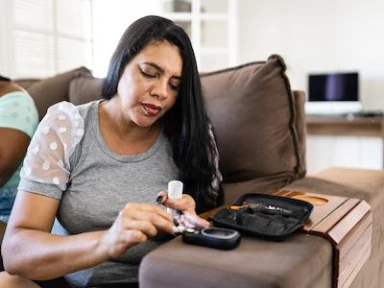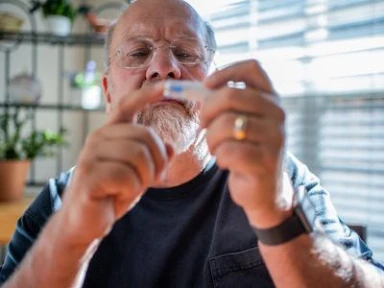Advancing Therapy with iGlarLixi
Advancing therapy with iGlarLixi*
Differentiation from complex insulin regimens, including the premixed insulin IDegAsp
Current unmet needs in T2D

- Despite advances in technology and therapeutics, many people with T2D across the globe fail to meet their glycemic goals1–5
-
This may be attributed to therapeutic inertia due to several patient-and physician-related barriers to treatment advancement, including perceived treatment complexity, fear of hypoglycemia, weight gain and stepwise treatment approaches6,7
-
Long-term insufficient glycemic control leads to a “dysglycemic legacy” and is associated with an increased risk of complications;7 achieving blood glucose targets may play an important role in reducing the risk of MACE8,9
-
Due to the progressive nature of T2D, treatment advancement to insulin-based therapiesis often needed to maintain glycemic control
-
In order to overcome therapeutic inertia and the resulting dysglycemic legacy, there is a clinical need for the timely therapeutic advancement of injectable therapy in people with inadequate glycemic control
-
Several insulin advancement options are available following insufficient control with basal insulin, including the progressive addition of a rapid-acting insulin to basal insulin, premixed insulin, addition of a GLP-1 RA, or FRCs
- Both direct (RCTs) and indirect treatment comparisons of insulin advancement options play an important role in identifying potential, clinically-relevant treatment options for people with T2D insufficiently controlled on basal insulin10–12
- In a NMA of RCTs, it was shown that iGlarLixi is associated with an improved HbA1c reduction from baseline versus premixed insulin (with a similar or improved safety profile compared with other intensification options)†10
- In the SoliMix RCT, iGlarLixi was found to provide improved HbA1c control with better weight change and less hypoglycemia than twice-daily BIAsp3011
- In a recent ITCcomparing iGlarLixi and IDegAsp, it was shown that iGlarLixi may offer clinical benefit in glucose control and bodyweight change in people who require both basal and meal-time intervention†12
- Based on the benefits observed in a RCT and ITC, FRCs, such as iGlarLixi, may offer a suitable alternative to other intensification options in adults with T2D, demonstrating benefits in HbA1c control and body weight change11,12
iGlarLixi versus other insulin advancement options

The content of this infographic summarizes key points discussed during an educational video-on-demand with Professor Philip Homeand Dr Khadija Hafidh.
*iGlarLixi is a fixed-ratio combination of insulin glargine 100 U/mL and lixisenatide.
†Note, this study was an indirect comparison of products across different studies and, as such, definitive conclusionscannot be drawn.
BIAsp30, biphasic insulin aspart 30/70; FRC, fixed-ratio combination of a basal insulin and a GLP-1 receptor agonist; GLP-1 RA, glucagon-like peptide-1 receptor agonist;IDegAsp, insulin degludec + insulin aspart; ITC, indirect treatment comparison; MACE, major adverse cardiovascular event; NMA, network meta-analysis; RCT, randomized controlled trial;T2D, Type 2 diabetes.
- Fang M, et al. N Engl J Med 2021;384;2219–28;
- Aschner P, et al. Diabetologia 2020;63:711–21;
- CDC.The National Diabetes Statistics Report 2020.Available at: https://www.cdc.gov/diabetes/pdfs/data/statistics/national-diabetes-statistics-report.pdf (Last accessed December 2022);
- Aronson R, et al. J Diabetes 2016;8:76–85;
- Pablos-Velasco P, et al. Clinical Endocrinology 2014;80,47–56;
- Del Prato S, et al. Int J Clin Pract 2005;59:1345–55.
- Okemah J, et al. Adv Ther. 2018;35:1735–45;
- Huang CJ, et al.Diabetes Obes Metab. 2018;20:2131–39;
- Giugliano D, et al. Diabetes Obes Metab. 2020;22:1397–405;
- Home P, et al. Diabetes Obes Metab 2020;22:2179–88;
- Rosenstock J, et al. Diabetes Care 2021;44:2361–70;
- Home P, et al. Diabetes Obes Metab 2021;23:2660–9.




